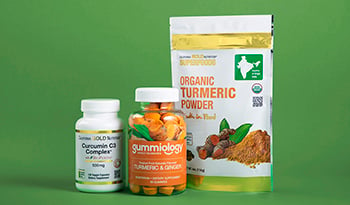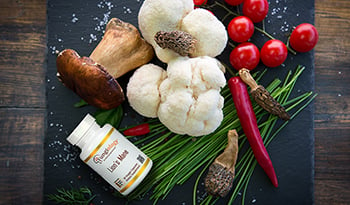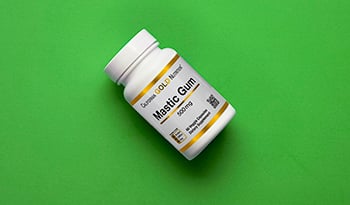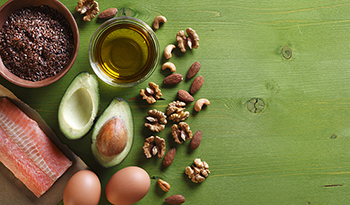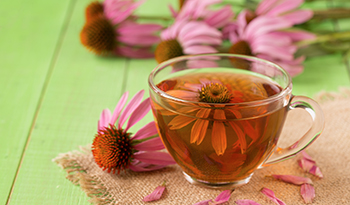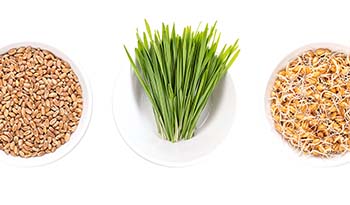Gotu Kola's (Centella asiatica) Benefits: The Herb of Longevity & Memory

What Is Traditional Chinese Medicine?
Traditional Chinese Medicine (TCM) is a complete system of medicine comprised of eight branches: Acupuncture, Herbal Medicine, Nutrition, Body Work (Tui Na/Cupping/Moxibustion), Meditation, Tai Qi/Qi Gong (Exercise), Feng Shui, and Cosmology. TCM looks to the natural world and observes how human health and disease are subject to the principles of natural order.
In TCM, patterns of illness may arise in the body, organs, and meridians in various ways. If the organs and channel meridians that carry the “energy” or “Qi” are stagnated, deficient, or in excess, disease arises. Through unique diagnostic methods, the TCM physician provides a diagnosis, prescription, and treatment plan encompassing the branches of TCM to the patient.
During the Zhou dynasty (770-446 BC), TCM was modernized and systematized. The Yin and Yang Theory, Five Element Theory, and other foundational theories that form the basis of TCM were established during this time.
The earliest Chinese Medical text on the theoretical systematic medicine of TCM is the Huáng Dì Nèi Jīng, or The Yellow Emperor’s Classic of Internal Medicine, which dates back to the 2nd or 1st century BC. This and other famous classical Chinese Medical texts are still taught to modern TCM college students worldwide.
The Chinese farmer Shén Nóng is said to be the originator of Chinese Herbal Medicine. Around 6000 years ago, Shén Nóng invented the cart and plow and discovered tea by accident. It is said that he cataloged 365 species of medicinal plants, which became known as the medical text Shén Nóng Běn Cǎo Jīng, or The Divine Husbandman’s Classic of Materia Medica. Gotu Kola, or Jī Xuě Cǎo, first appeared in this classic text.
What Is Gotu Kola?
Gotu Kola is known as the “herb of longevity” and is significant in TCM, Ayurvedic, and Indonesian medicine. Its Latin name is Centella asiatica, also known as Asiatic Pennywort.
Ancient Chinese medical texts refer to Gotu Kola as the “snow-collecting herb.” In TCM, it has several names that translate to “gold money herb” and “golden coin grass” because its leaves are round like coins.
Gotu Kola commonly grows in warm temperate, subtropical, and tropical areas of Asia, subtropical Africa, Australasia, and the Pacific. It inhabits shady, damp areas, wet grasslands, river valleys, wetlands, and damp, muddy shorelines near shallow brackish, and fresh waters. The plant features small light purple or white flowers.
Gotu Kola Uses in Traditional Chinese Medicine
Gotu Kola’s properties and flavors in TCM are bitter, acrid, cold, and non-toxic. It influences the liver, spleen, kidney organs, and meridians.
Gotu Kola clears damp heat, resolves toxicity, and reduces swelling in the body. In TCM, Gotu Kola is used to promote urination and help treat sores and abscesses, diarrhea, red eyes from wind-fire, swollen sore throat, gravelly or painful bloody urinary dribbling, dysenteric disorder, damp-heat type jaundice, vomiting, nosebleeds, red eyes, rashes, scabies, and dermatosis. It also invigorates the blood, reduces swelling, and lessens pain from traumatic injuries.
This herb can be used externally for rashes, as eyedrops, or internally. Gotu Kola is contraindicated in those with cold from deficiency.
Gotu Kola Health Benefits
In TCM, Gotu Kola is used to clear damp heat. It may treat gastrointestinal issues like enteritis, dysentery, or abdominal pain. Because it can cool the blood and stop bleeding, it is used to treat vomiting and uterine bleeding caused by heat in the blood.
Gotu Kola also clears the liver and brightens the eyes. It may help with eye disorders like night blindness in children, inflammation, cataracts, and glaucoma.
In animal studies, Gotu Kola had sedating and tranquilizing effects on the central nervous systems of mice and rats. It inhibits acid secretion and gastric peristalsis in rats. And studies suggest the young shoots of the Gotu Kola plant have antibiotic properties.
Internally, Gotu Kola is used to treat:
- Infectious hepatitis
- The common cold
- Heatstroke
- Tonsilitis
- Inflamed throat
- Pleurisy
- Urinary infections
- Stones
- Colitis
- Dysentery
- Traumatic injuries
Externally, Gotu Kola is used to treat:
- Poisonous snake bites
- Toxic swellings from deep-rooted boils and skin infections
- Shingles
- Dermal tuberculosis
- Leprosy
- Dermal ulcers
- External traumatic bleeding injuries
Gotu Kola in Ayurvedic Medicine
Gotu Kola is highly revered in Ayurvedic medicine. The Sanskrit name of Gotu Kola is Brahmi, which is derived from Brahman or Lord Brahma. Lord Brahma is the Hindu creator god, while “Brahman” refers to universal consciousness. Gotu Kola or Brahmi means energy, known as Shakti. It is treasured as a revitalizing herb and is mentioned in Ayurvedic treatises Charaka Samhita and Sushuruta Samhita from the 3rd century AD.
Ayurveda widely recognizes Gotu Kola as an herb that supports cognitive function. Practitioners claim it boosts brainpower, helps heal skin issues, and improves liver and kidney health.
Studies suggest Gotu Kola offers a wide range of biological properties. These include wound healing, anti-inflammatory, anti-psoriatic, anti-ulcer, hepatoprotective, anticonvulsant, sedative, immunostimulant, cardioprotective and cardiotonic, antidiabetic, cytotoxic and antitumor, antiviral, antibacterial, insecticidal, antifungal, antioxidant, antispasmodic, astringent, diuretic, analgesic, and antipyretic.
In Ayurveda, all parts of the plant are considered helpful for treating epilepsy, leprosy, polyuria, distaste, psychosis, fever, bronchial asthma, and stammering. Gotu Kola is also a powerful adaptogen, which may help normalize the nervous system and help the body adapt to stress.
Neuroprotective Benefits of Gotu Kola
In vitro studies suggest Gotu Kola has neuroprotective effects and may slow brain aging. In one study, Gotu Kola helped inhibit an enzyme that plays a critical role in the development of Alzheimer’s Disease by up to 50%. It may also inhibit an enzyme involved in the development of Parkinson’s disease. Gotu Kola’s inhibitory action on certain enzymes may help with nerve damage in the brain and nervous system.
Animal studies suggest Gotu Kola may offer memory-enhancing effects. In one study, mice with induced memory loss were fed Gotu Kola extract. After taking the extract, the mice performed better on behavioral memory tests. The authors suggest that Gotu Kola extract may positively affect memory due to its antioxidant effects on the brain.
In a related study, Gotu Kola’s antioxidant effects helped reduce the type of cellular damage seen with Parkinson’s Disease. Older rats who consumed Gotu Kola for 60 days had lower levels of oxidative stress associated with cell damage and aging in their brains. The researchers concluded Gotu Kola has a neuroprotective effect on older rats.
In another study, Gotu Kola was given to mice with permanent brain damage due to impaired blood flow or stroke. The mice showed improved neurologic status, behavior changes, and reduced brain damage. The authors concluded that Gotu Kola may be a promising treatment for stroke.
Cautions and Contraindications of Gotu Kola
Some people should use caution when taking Gotu Kola. Since it may stimulate or increase menstrual flow and have abortifacient effects, people who are pregnant or breastfeeding should avoid using Gotu Kola. In people with diabetes and hyperlipidemia, Gotu Kola may raise blood sugar and lipid levels.
Gotu Kola isn’t meant to be taken long-term. The typical suggested use is six weeks with at least a two-week break between uses.
Takeaway
Gotu Kola is an ancient herb used for thousands of years in Traditional Chinese Medicine, Ayurveda, and Indonesian Medicine. In TCM it influences the liver, spleen, and kidney meridians and is used to treat various conditions.
Since individuals with certain conditions should use caution when taking Gotu Kola or avoid it altogether, always consult your physician before treating yourself with this revered herb.
References:
- Shén Nóng Běn Cǎo Jīng” (Divine Husbandman’s Classic of Materia Medica)
- Chinese Herbal Medicine Materia Medica 3rd edition, Bensky, Clavey, Stöger)
- An Introduction to Chinese Herbal Medicine”, Wright, Mark
- Chinese Medical Herbology and Pharmacology, Chen John, Chen Tina
- Journal of Pharm. Sci. 64:535-98, 1975
- Orhan IE. Centella asiatica (L.) Urban: From Traditional Medicine to Modern Medicine with Neuroprotective Potential. Evid Based Complement Alternat Med. 2012;2012:946259. doi: 10.1155/2012/946259. Epub 2012 May 14. PMID: 22666298; PMCID: PMC3359802.
DISCLAIMER:This Wellness Hub does not intend to provide diagnosis...













































































 Table of Contents
Table of Contents



